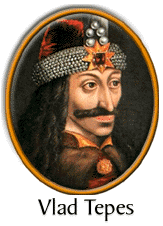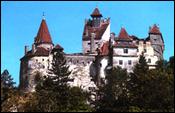 |
 |
|
Romanian History Vurpar, Transylvania, Romania is a typical European village, typically Transylvanian and thoroughly immersed in the history of their rich and troubled country. The Dacians
occupied present day Romania long before the Roman Legions subjugated
them. The 300-year long Roman occupation resulted in a new nationality,
the Romanians. After the 1st Century AD Roman Legions withdrew in
the face of repeated assaults from the east, and the people they
left behind climbed into the safety of the Carpathians only to repopulate
the surrounding plains some three hundred years later. (For a more
extensive history of Romania click here.)
For many years the Turks dominated the southern two-thirds of Romania, Wallachia and Moldavia. To the north the rising Hungarian crown dominated Transylvania. For hundreds of years Romanian princes paid tribute to Istanbul and suffered repeated raids by the Sultan's armies and brigands. A notable exception was Prince Vlad Tepes who defied the Turks and defended the passes into Transylvania. His reputation comes down to us within the exaggerated figure of Dracula. (In fact, Dracula's castles, homes and other haunts are all within a short drive of Vurpar.) As the Austro-Hungarian Empire began to push the Turks back from Europe. Romania was increasingly a battle ground. German and Hungarian settlers were sent to guard the passes, populate cities and make Transylvania one of Europe's eastern bastions. In the mid-1800s the Russians began pushing the Turks south and again Romania became a battle ground.
In 1859, just
after the Crimean War, Romanian princes, led by Ion Cuza, World War II
was an unmitigated disaster for Romania! Leading up to the war,
the country was torn between indigenous fascists, nationalists,
communists, royalists and liberals.The
great historian and politician Nicolae Iorga was assassinated by
the Iron Guard and the government was torn whether to ally with
Hitler to the west or
The Communists took power in late 1944. They imposed collectivization on the farmers and industrialization on the cities. Millions were displaced. After 45-years of communist dictatorship the country was near collapse. Romanians rose up in violent revolution at Christmas 1989 and overthrew the communists and executed the dictator, Nicolae Ceausescu. When that fighting finally ended and the country was opened to inspection the world discovered in Romania some of the globe's worst pollution, a countryside laying fallow and cities in advanced decay. Ten years later, Romania has a democratic government attempting to join NATO and the European Economic Community. The transition from Communism to a market economy has created many hardships for older Romanians and many frustrations for the young. Romania's population is in decline through a receding life expectancy and increased emigration. Romania needs
help. The village, within the former domain of the fabled Dracula and about 40 miles from his fabled castle, was once a productive community of Romanians and Germans. Most of the Germans have left. The remaining Romanian population still sends its kids to school, still works its flocks and maintains its village systems, but seems to be regressing in many aspects. A little help goes a long way. A project is underway to repair and "modernize" the school. Another project will attempt to assist the clinic. A school snack program was recently begun which resulted in a dramatic increase in the number of children attending school. A mini-loan program is under development and a project to stimulate a crafts industry has begun. A Lion's Club eyeglass project will bring some 5,000 pairs of glasses to help people see! Many more helping-hand projects are planned. Perhaps you can join of our efforts. Make
donations payable to: It's
a tax deductible donation! |
|||||
|
Welcome
to the Village of Vurpar. Learn about us and help
if you can.
Questions or Comments? E-mail us at: info@vurpar.com |
|||||



 Transylvania
from Austria-Hungary.
Transylvania
from Austria-Hungary.  King
Michael moved Romania to the Allied sides near the end of the war
as Soviet armies approached. Stalin annexed Bessarabia again and
grabbed a large area in Romania's north, Bucovina, so the Soviets
could have a direct tank route to Hungary. Romania also lost hundreds
of thousands or dead, and her freedom.
King
Michael moved Romania to the Allied sides near the end of the war
as Soviet armies approached. Stalin annexed Bessarabia again and
grabbed a large area in Romania's north, Bucovina, so the Soviets
could have a direct tank route to Hungary. Romania also lost hundreds
of thousands or dead, and her freedom.